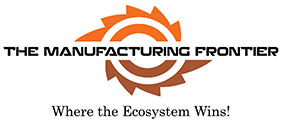“The Indian manufacturing sector ended the June quarter on a stronger footing. The headline manufacturing PMI rose by 0.8 percentage points to 58.3 in June, supported by increased new orders and output. Consequently, firms increased their hiring at the fastest pace in over 19 years. Input buying activity also rose during the month.” Maitreyi Das, Global Economist at HSBC
Growth in the Indian manufacturing sector recovered some of the ground lost in May, with the headline PMI posting nearly five points above its long-run average. June data showed that buoyant demand conditions spurred the expansions in new orders, output and buying levels. Concurrently, firms raised employment at the fastest rate seen in more than 19 years of data collection. Cost pressures receded from May, but were nevertheless among the highest over the past two years. As a result, companies lifted selling prices to the greatest extent since May 2022.
The seasonally adjusted HSBC India Manufacturing Purchasing Managers’ Index™ (PMI®) increased from 57.5 in May to 58.3 in June, thus indicating a sharper improvement in business conditions. The PMI was comfortably above its long-run average.
Manufacturing output increased at a sharp pace that was faster than in May, as underlying demand remained favourable and new business continued to flow in. The performance of the consumer goods industry was especially strong, although substantial increases were also noted in the intermediate and investment goods categories. June saw a stronger expansion in sales at manufacturers in India. Buoyant underlying demand, higher export volumes and successful advertising all fueled growth, anecdotal evidence showed.
As a consequence of ongoing increases in new order intakes, firms stepped up recruitment. The rate of job creation was sharp and the strongest seen since data collection started in March 2005. Staff expenses reportedly intensified in June, which coupled with rising material and transportation costs caused another overall increase in operating expenses. The rate of input price inflation eased since May, but was nonetheless among the highest since August 2022. In particular, panelists indicated that aluminium, plastic and steel were up in price.
Maitreyi Das, Global Economist at HSBC, said: “The Indian manufacturing sector ended the June quarter on a stronger footing. The headline manufacturing PMI rose by 0.8 percentage points to 58.3 in June, supported by increased new orders and output. Consequently, firms increased their hiring at the fastest pace in over 19 years. Input buying activity also rose during the month. On the price front, input costs moderated slightly in June, but remained at elevated levels. Manufacturers were able to pass on higher costs to customers, as demand remained robust, resulting in improved margin. While the overall outlook for the manufacturing sector remains positive, the future output index receded to a three-month low, albeit it remains above the historical average.”
A demand environment conducive to growth allowed manufacturers in India to share additional cost burdens with their clients. Selling charges were raised to the greatest extent in over two years. Intermediate goods makers registered the quickest increase in input costs, while consumer goods producers led the upturn in output charges. June saw new export orders increase substantially again.
Companies attributed higher inflows of new work from overseas to better demand from Asia, Australia, Brazil, Canada, Europe and the US. Despite easing from May, the rate of expansion was well above its long-run average. Input buying activity rose in June, extending the current sequence of monthly expansions to three years. Among the main determinants of growth listed by panelists were stock replenishment efforts, robust demand and rising output requirements.
Stocks of purchased materials rose at a near-record pace, supported by another improvement in suppliers’ delivery times. Finished goods inventories decreased further as firms often met sales through warehoused items.
The outlook for the manufacturing sector remained positive, with nearly 29% of panelists expecting output growth over the coming year. Firms forecast further improvements in demand and order book volumes in the year ahead, with advertising and greater client enquiries also underpinning optimism. The overall level of confidence receded to a three-month low, however.
Sources: HSBC, S&P Global PMI

